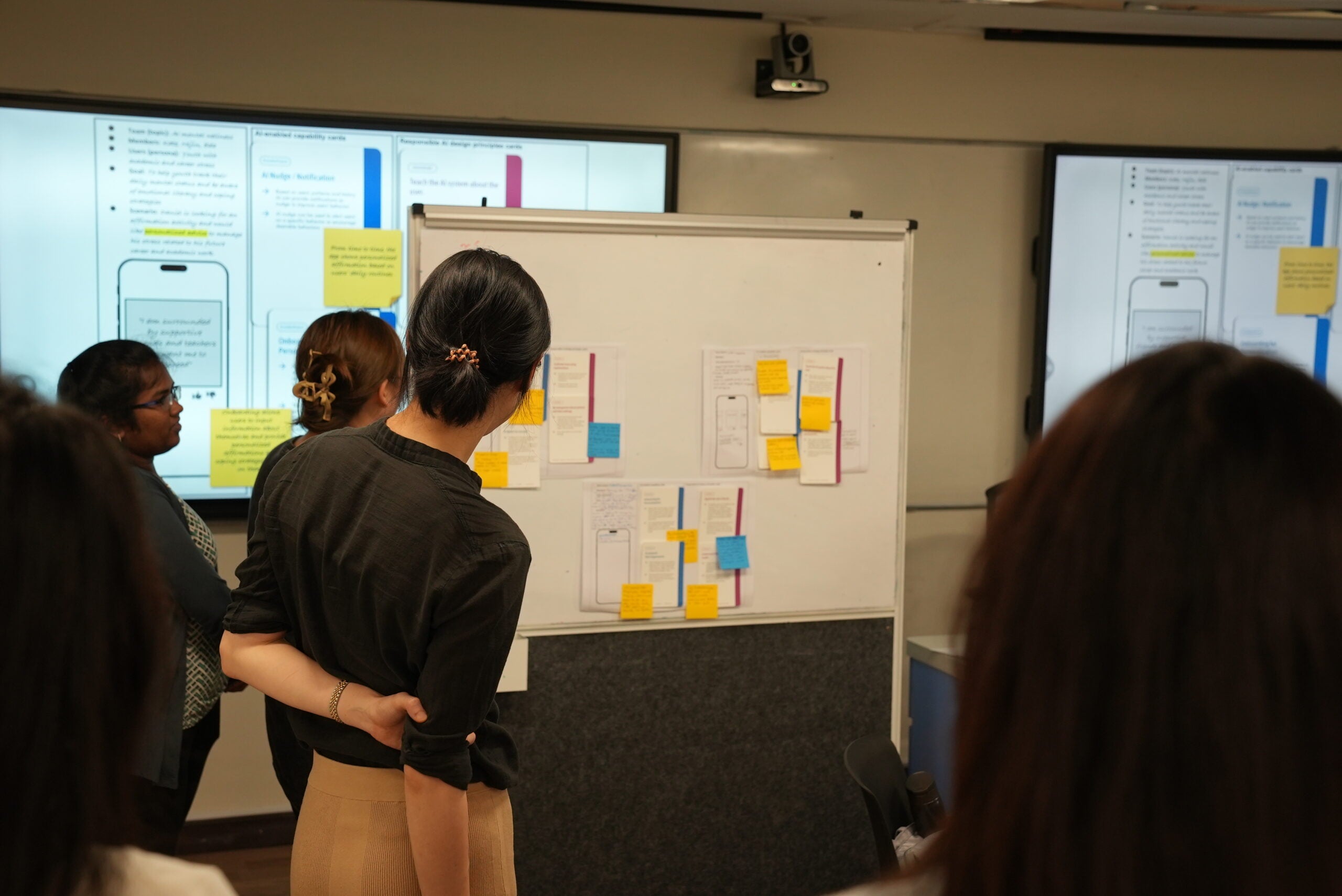CDE5311 Designing UX/UI for Human-Centred AI

This course introduces foundational knowledge and methods necessary for designing human-centred artificial intelligence (AI) applications, including user experience (UX) and user interface (UI) design, prototyping, user testing, and iteration. Students will learn principles and tools to create ideas for AI-powered products that can contribute to realising values and making an impact in the real world. This course also investigates the fundamentals of the human experience, examining how responsible AI design and inclusive design principles can be applied to create meaningful UX/UI designs, facilitate human-AI interaction, and develop human-centric AI.
At the end of this course, students should be able to:
- Understand the fundamentals of human experience and how AI technology mediates human experience in positive ways.
- Understand various UX research methods and their relevant applications to explore and define problems.
- Apply inclusive design, responsible AI design, value-sensitive design principles to ideate AI solutions, prioritising human well-being and social good.
- Develop low-fidelity and hi-fidelity prototypes using appropriate UX/UI design tools.
- Conduct user testing on prototypes and apply the findings to prototype iterations.
- Present and demonstrate UX/UI that mediates liveability and human well-being in AI-powered apps.
Workload: 4 units
Note: This course is designed for graduate students but limited spaces are available for Year 4 undergraduate students.
Course syllabus
Designing user experience (UX)
- What is good UX?
- 5 elements of UX
- AI UX
- UX design process: empathise, define, and ideate
- Inclusive design: why empathy is important in UX
2. Conducting UX research
- UX research methods
- UX research data analysis
- User interview
- User journey map
- Persona
3. Generation of concept designs from UX research
- Analysis of data from user research
- Vision statement and value proposition
- Storyboard and user scenario
4. Building wireframes and low-fidelity prototypes
- Sketching of product ideas
- Introduction to user interface (UI) design
- UI guidelines and templates
5. Creating high-fidelity designs and prototypes
- UI prototyping tools (e.g. Figma)
- UI libraries
- Site maps and task flow
6. User testing and prototype iteration
- User testing methods
- User testing plan
- Analysis of user testing results
- Application of user testing results to improve UI/UX
- Iterative refinement using insights from user feedback and ethical audits

